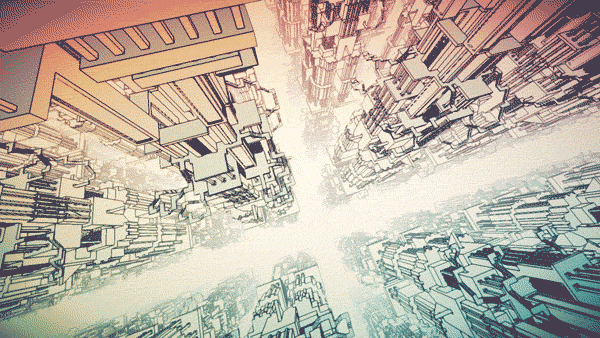Manifold Garden is a gravity-defying, visually stunning puzzle game wherein the player navigates a complex, 3D geometric world. The game embodies several of Hunicke, LeBlanc, and Zubek’s 8 Kinds of Fun, leading to a polished and pleasing gaming experience.
The game is gorgeous, both in its visuals and the player’s experience. However, out of all the aesthetics that the Manifold Garden embodies, I think it excels at the fantasy and sensation aesthetics.
The game has an exotic physics engine. The world is a tiled, non-Euclidean 3D space where each level is repeated infinitely in all directions. These mechanics serve two purposes. Most of the time, players interact with them to solve the actual puzzle. The levels are often designed to encourage and require the player to pass through impossible hallways, walk sideways on walls and waterfalls, or fall off the edge of the world only to land on it again. This interaction creates a dynamic where the user has to imagine what movements are possible in this new world that are impossible on Earth. Immersing the user in such an environment and headspace creates a sense of wonder, fantasy, and new possibilities consistent with the fantasy aesthetic.

Sometimes, however, the player’s interaction with the game’s unique physics does nothing more than delight the player. At various points in the game, the level uses the game’s strange mechanics to dazzle the player with an impossible display of moving shapes and colors. These animations do not involve any user input once they are initiated, so the player gets to sit back and awe at the art on screen. These moments create a dynamic where the play can just take it all in, encouraging them to appreciate the game’s sensory experience. For this reason, I argue that sensation is one of the game’s other core aesthetics.

I love this game for its sensory elements, clever level design, and satisfying physics. If you own a PS5, Xbox, or Windows PC, I highly recommend checking out this game.



